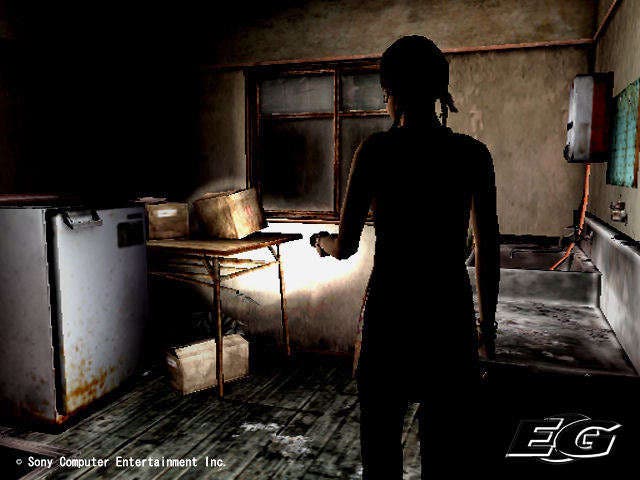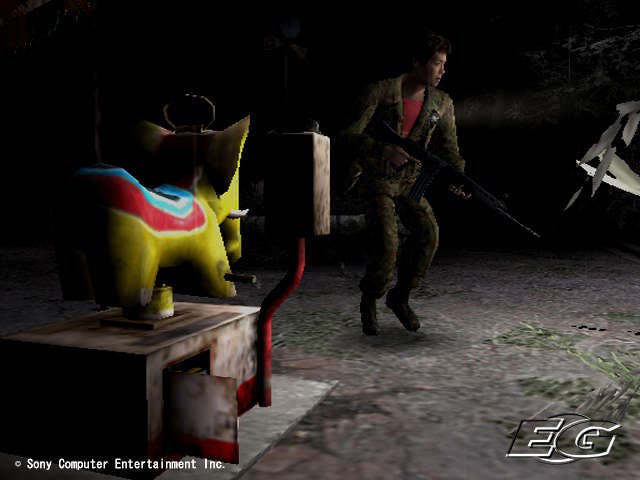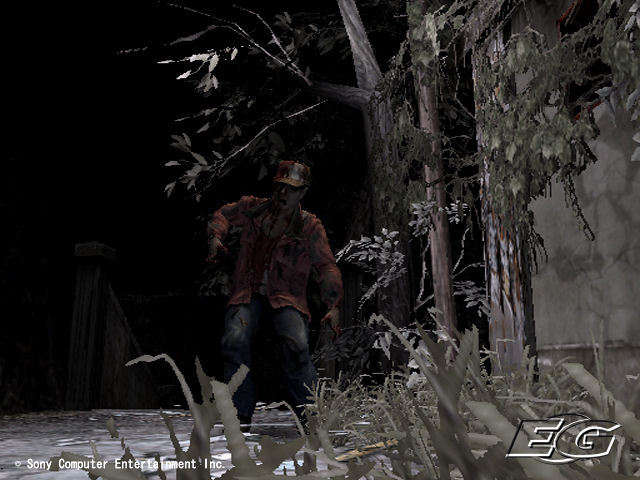Forbidden Siren 2
Pre E3: Night of the living dead.
Few survival horror games have tried anything as determinedly different as 2004's Forbidden Siren. The brainchild of Silent Hill creator Keiichiro Toyama, the grainy visuals and dark, oppressive atmosphere was unmistakable, but the gameplay went in a completely unique direction that involved avoiding the gaze of the undead by allowing the player to Sight-Jack or effectively 'tune-in' to the what the patrolling Shibito (the living dead) could see.
During its more effective scenarios, the feeling of terror as you painstakingly waited for the right moment to sneak past these deadly enemies was incomparable. Technically it was a fantastic, almost completely unique game, but the learning curve required to get into Sony's underappreciated cult classic also made the game a frustrating trial and error fest.
Not only that, its confusing, overlapping storyline and zig-zagging timeline meant that making sense of what was going on with the multiple characters all but impossible without the benefit of a guide or meticulous note taking skills. Often, progress was only possible if certain objects were picked up first, with confusing retreads occurring without proper explanation. Still, it was worthy of huge praise for daring to shake up a genre that - at the time - was firmly stuck in a rut.
Smoothing the curve

The soon-to-be released sequel evidently tries right from the start to make the game a far more accessible affair, yet one that also builds on a lot of the more interesting ideas that made the original such a worthwhile experiment. The most obvious improvement that's evident from the word go is the way Sony chooses to make every new action and command clear to the player as they play through it. This not only negates the need for contrived tutorials, but it means you learn through your own action, and, better still, if you fail, a new checkpoint system ensures you're not forced to constantly backtrack once you've overcome a significant obstacle. This seamless introduction also acts as a decent means of interspersing the story elements and gives the player a chance to become familiar with each of the various characters - more of which in a moment.
Predictably, following the storyline is as completely mystifying as before (at least until you've played through a good few hours' worth), but this is an undeniable part of its charm. Set 29 years after the original, the game kicks off when a group of characters on board a boat are hit by a violent storm and washed up on what turns out to be the island of Yamijima (the Island of Darkness). The tsunami is the least of their worries, though as each character quickly discovers that this is possibly the last shore on Earth they would want to wash up on. Caught in the grip of something terrifying and inexplicable, the only answer is to try and find safe haven and how to turn the tables on the island's bloodthirsty, shambling inhabitants.
With survival always your main priority, the general 'duck and dive from A to B' formula of the original is retained, but is an instantly more likeable experience in almost every way. The controls are almost identical to the standard third person settings in the original, except now you can flick between a first person viewpoint at any time with the dpad. It takes a bit of getting used to, but helps in combat and means you get an up-close-and-personal view of everything if you fancy. Avoiding the observant glances of the Shibito is, of course, the best way of getting around, so the game takes care to explain the benefits of crouching while moving, turning off your torch once they're alerted, and the more obvious stuff about waiting for them to look the other way before you slink past them.
Confrontation camp

Sometimes, though, confrontations are plain unavoidable (or even desirable...), and you're also schooled in the art of whacking them in the face with swords and hammers, not to mention sniping them right between their undead eyes. The trouble with the living dead (apart from the stench and foul manners) is their tendency to keep getting up after you've felled them - so getting the hell out intact is always your best bet.
The tactics you'll employ to get the better of them will also vary according to each character's specialities, the type of characters you'll face and what you're tooled up with. Sometimes, shooting is the best bet of clearing a safe passage to your next objective- and one such set of military-minded characters gives you several opportunities to try out various pistols, shotguns and automatic weapons.
At other times you have to simply use your wits and create a distraction - just like in the original. This might involve merely shouting or throwing objects, but in other missions it's involves a little more lateral thought. For example, in one mission you're able to drive a pick-up truck around, which obviously gives you the chance to run the Shibito over. But as tempting as that might sound, a much better plan is to toot your horn to distract the sentry with a gun - and make him follow you so that you can leg it around the back and avoid being shot yourself.
Light of my life

In other missions light is your best ally, and with certain new 'black cloud' monsters (we don't know their proper names yet) you have to shine your torch in their direction in order to send them packing, or find some other light source to do the job. In another part of the general introduction you have to Sight-Jack (tune into a Shibito monster's field of vision) in order to see what the combination is on a padlock, and there are plenty of other quirky examples of how the gameplay has evolved beyond merely advanced hide and seek.
Other slightly curious new ideas include being able to control a dog (with poor vision) and Sight-Jack your owner in order to get around, while other missions involve having to Sight-Jack your partner in order to 'see' special puzzle-related items like rotatable ornaments. Apparently you'll even be able to Sight-Jack into the past later on in the game, allowing you to see how things used to be and, presumably, solve puzzles that require this prior knowledge.
As before, much of the overall understanding of what's going on comes out of poking around and picking up seemingly random objects and artefacts. Quite often, you'll unwittingly trigger events and even unlock subquests in a way that doesn't make sense in a traditional gaming context, but if you're familiar with the inner workings of the original it's another little feature carried forward.
Once again, the visual styling of Sony's survival horror entrant is spot on, using typically abandoned, dark, grimy and downright unpleasant environments, a selection of hideous undead enemies and a cast that once again sport immensely realistic facial models that seem to be a generation ahead of those we put up in most videogames. Thankfully, the English voice acting has improved enormously from the comically polite amdram efforts of the original, and you can even enjoy the game with the original Japanese voiceovers with subtitles if you prefer.
Whether you thought Forbidden Siren was a flawed experiment or standout genius, Keiichiro Toyama and Takafumi Fujisawa have evidently listened to the feedback and done more than enough to make Forbidden Siren 2 a standout contender for survival horror game of the year. With greater accessibility married to the fantastic premise and incredible atmosphere, it's looking like an essential horror offering this summer, and proof that there's plenty of life left in the PS2 as the focus turns to Sony's next gen plans.
Forbidden Siren 2 is coming to Europe in June exclusively on PS2 through Sony Computer Entertainment. Check back soon for an in-depth review. Also, be sure to check out our recent interview.


